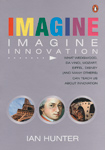Ingenuity and a recycled orchestra
Last night, a friend posted a video on my Facebook wall along with a comment:
dare you to try this at school…double dare you, even. Nay! Physical challenge! 🙂
I was mildly curious, mostly because of the particular person who posted the video, and figured that it must be something related to education.
Prepare to be blown away – I certainly was.
Wow! Although I am no longer a classroom or music teacher, I found this video mindblowing, to say the least. It shows how the town of Cateura, Paraguay, which is largely built on a landfill, overcame the burden of poverty to create the Landfill Harmonic project (such a clever name!) and bring music to their community. With a bit of guidance, support and technical know-how to support their vision, it also shows the power that music has to bring hope and enrichment to everyone’s lives, regardless of where they live and their circumstances. I also love the innovative way everyday items that had been discarded as rubbish were recycled and repurposed to produce something amazing. It takes true innovation and creative thinking to see the possibilities in a seemingly worthless object and turn it into something grand. Why don’t we do this more often?
As a classroom teacher, a major highlight of term 4 each year was an annual wearable art project, where the children would design and construct creative costumes from recycled or repurposed materials then model them in our very own fashion parade. At the time, the World of Wearable Art Awards were in their early days and hadn’t yet moved to Wellington but were still something to aspire to. The creativity our young designers showed was always refreshing and they had huge amounts of fun working in groups to put together their costumes. The children also learned practical skills and the versatility of staple materials such as rubbish bags, duct tape and a glue gun – there is nothing these items couldn’t achieve or fix. But, of course, all the materials were clean with some sneakily masqueraded as ‘casually lying around at home’ when I am certain they were purchased new by well-meaning parents. I just hope the children learned that you don’t need the best of everything to create something worthwhile and that anything is possible.
It looks like a documentary about the Landfill Harmonic project is nearly finished production and will be released next year, something I will really look forward to.


